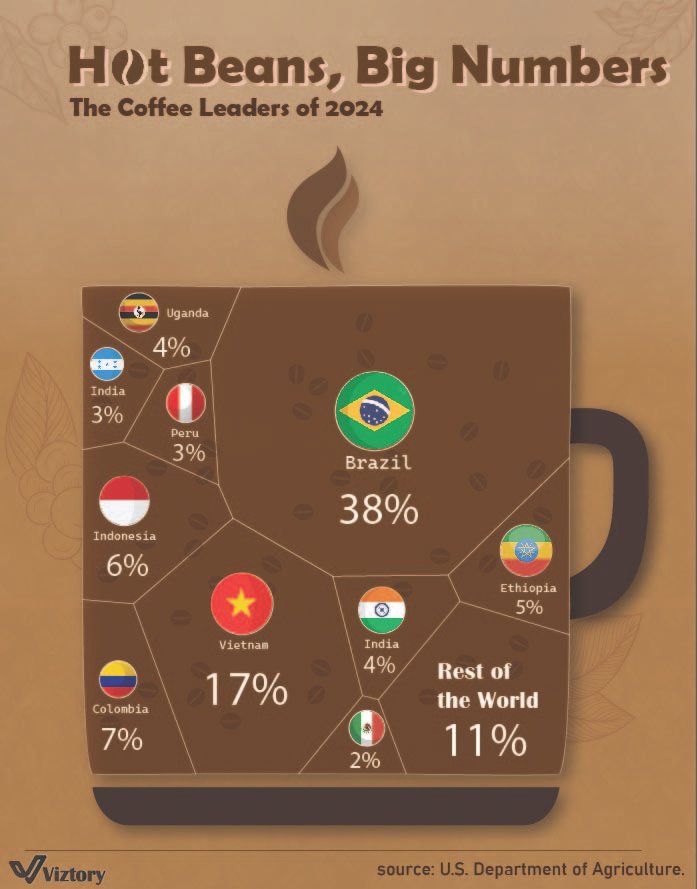Hot Beans, Big Numbers
The Coffee Leaders of 2024
Opening Thoughts
Coffee isn’t just a beverage—it’s a multi-billion-dollar global commodity that powers mornings and economies alike. The infographic “Hot Beans, Big Numbers” illustrates the dominance of specific countries in the global coffee market for 2024. It visually represents how the world’s caffeine addiction translates into powerful production numbers that fuel international trade and brand positioning.
Global Leaders in the Coffee Race
-
Brazil, holding a massive 38% share, clearly stands as the coffee king of 2024. This dominance gives Brazilian producers and marketers a strong foothold in both premium and commercial coffee sectors.
-
Vietnam follows with 17%, maintaining its reputation as a major supplier of Robusta beans—popular in instant coffee and espresso blends.
-
Countries like Colombia (7%), Indonesia (6%), and Ethiopia (5%) contribute significantly, often branding their beans around unique flavor profiles and heritage farming practices.
Brand Storytelling Through Origin
Marketers are increasingly leveraging “origin stories” to create emotional connections with customers. For example:
-
Ethiopian coffee is often marketed as the “birthplace of coffee,” rich in culture and heritage.
-
Colombian beans carry a global reputation for quality, aided by decades of nation-branding strategies.
Strategic Insight
The spread of production across the globe also reflects shifting consumer preferences. With specialty coffee demand rising, brands now highlight the specific regions or even farms their beans come from, turning agricultural output into marketable identity.
This infographic also shows smaller contributors like India (3-4%), Peru (3%), Uganda (4%), and Mexico (2%), many of which are emerging as niche suppliers targeting ethical sourcing, sustainability, and fair-trade segments.
Marketing Takeaway
What this means for the industry is clear: market share is not just about quantity—it’s about storytelling, reputation, and adaptability. Even countries with lower output are finding competitive edge through clever branding and strategic market positioning.
Final Thoughts
“Hot Beans, Big Numbers” is more than a breakdown of global coffee output—it’s a snapshot of market power, branding potential, and consumer influence. As coffee lovers demand more transparency and uniqueness, the role of marketing becomes central in transforming a commodity into an experience. Whether through sustainability claims or heritage pride, the story behind every bean is becoming just as important as the brew itself.

